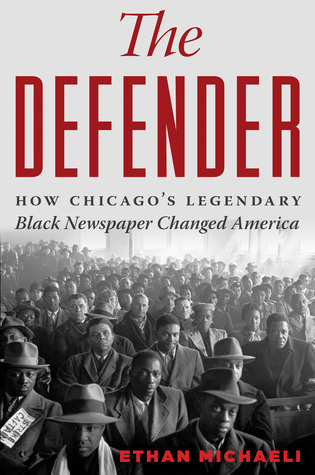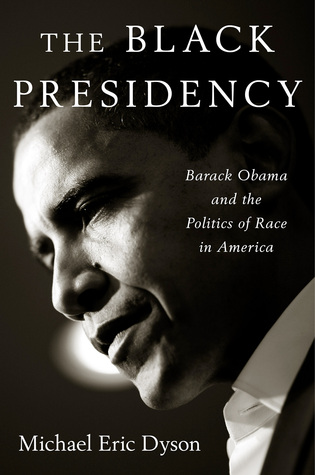 The Defender: How the Legendary Black Newspaper Changed America by Ethan Michaeli
The Defender: How the Legendary Black Newspaper Changed America by Ethan Michaeli Formats available: hardcover, ebook
Pages: 656
Published by Houghton Mifflin Harcourt on January 12th 2016
Purchasing Info: Author's Website, Publisher's Website, Amazon, Barnes & Noble, Kobo, Bookshop.org
Goodreads
“An extraordinary history…Deeply researched, elegantly written…a towering achievement that will not be soon forgotten.” —Brent Staples, New York Times Book Review Giving voice to the voiceless, the Chicago Defender condemned Jim Crow, catalyzed the Great Migration, and focused the electoral power of black America. Robert S. Abbott founded The Defender in 1905, smuggled hundreds of thousands of copies into the most isolated communities in the segregated South, and was dubbed a "Modern Moses," becoming one of the first black millionaires in the process. His successor wielded the newspaper’s clout to elect mayors and presidents, including Harry S. Truman and John F. Kennedy, who would have lost in 1960 if not for The Defender’s support. Along the way, its pages were filled with columns by legends like Ida B. Wells, Langston Hughes, and Martin Luther King.
Drawing on dozens of interviews and extensive archival research, Ethan Michaeli constructs a revelatory narrative of race in America and brings to life the reporters who braved lynch mobs and policemen’s clubs to do their jobs, from the age of Teddy Roosevelt to the age of Barack Obama.
My Review:
The story of The Defender is really multiple stories. It is a history of America in the 20th century, as seen through a slightly different lens than the one many of us were taught in the history books. And because of that lens, because of the audience that The Chicago Defender was built by and for, it is also the history of Black America in the 20th century. And all of that from the focal point of Chicago, where The Chicago Defender was based and from which it drew so many of its stories.
And it is also the history of the rise and fall of one newspaper, and in some ways newspapers in general, in the 20th century. The Chicago Defender began publishing in 1905, saw its own rise and the rise of the community it served, and it now survives reduced in size and influence, as so many newspapers have been reduced in size and influence.
February is Black History Month, and The Defender is a marvelous book for this month, as it tells its story from Bronzeville, that part of Chicago that became the heart of the Black community in the city.
But the story of The Chicago Defender begins earlier, at the Chicago World’s Fair and Columbian Exposition in 1893, as so many Chicago stories do. It was in the White City that a very young Robert Sengstacke Abbott met the already elder statesman Frederick Douglass, and began to conceive of the idea of a newspaper for African-Americans based in Chicago. Abbott had trained to be a newspaper man at college, and he just plain wanted to move to Chicago from his home in the rural, segregated and downright dangerous, South.
Much of the early chapters of the book are also Abbott’s story, as he begins his newspaper on the thinnest of shoe-string margins, at first not only doing all the work himself but also relying on the kindness of his landlady to house the fledgeling enterprise in her dining room.
Abbott was smart. He was lucky. And mostly, he had a dream that he diligently pursued for the rest of his life. His dream was to provide news, education, exhortation and uplift to the African-American community, not just in Chicago but around the world. His goal was to break the back of Jim Crow in the South and tacit segregation in the North. And while he did not succeed in his lifetime, he is certainly one of the giants on whose shoulders the mayoralty of Harold Washington and the presidency of Barack Obama stand.
So this is history, from the very late 1800s and the birth of the idea, to the sale of the paper from the family to an outside company in 2003 after nearly a century of ownership by the founding family. By 2003 The Defender wasn’t what it was in its heyday, but no newspaper is what it was. Even The Chicago Defender’s long-time rivals in the Chicago mainstream press, The Chicago Sun Times and The Chicago Tribune, have shrunk from their glory years.
But what fascinates about the story of The Chicago Defender is the way that it in its time, and it in its history, shine a different light on events that mainstream audiences are familiar with – from the corrupt administrations of “Big Bill” Thompson to the machine politics of Richard J. Daley to the ascendancy of Harold Washington. The Chicago Defender was one of the great sparking motivations for the “Great Migration” of African Americans from the rural South to the industrial North in the first half of the 20th century.
The power of the voting block mobilized by The Chicago Defender held the fate of congressional representatives, Chicago mayors and even presidents in its collective hands on Election Day. And the principals of The Chicago Defender pressed for, and eventually achieved, among other notable successes, complete integration in the U.S. Armed Forces.
This book is a captivating look at 20th century America, and a marvelous study of the power of the press to achieve greatness.
Reality Rating A-: I both enjoyed this book and was fascinated by the view of history that it illuminates. I love reading narrative history, where the story, while true, also has a beginning, middle and end, which the history of The Chicago Defender certainly does. The paper began as one man’s dream, and its history with his family ends in the 21st century as newspapers around the country struggle with finding a foothold on the future.
But The Chicago Defender still has a real voice and force in Chicago and U.S. politics. Its annual Bud Billiken Day Parade is still one of the places for up and coming politicians to see and be seen, and for sitting political leaders to get in touch with their constituents and the African American community.
The history in this book was most interesting the further away it was from the present. Reading about the early years, one can almost see the initial small staff laboring away in Mrs. Lee’s dining room, surviving those lean years on hope and her homecooked meals.
It was ironic that the parts of this history that the author witnessed as a member of the staff in the late 1990s felt like a much barer recitation of names and dates, while the early years are almost luminous.
As someone who lived in the Chicago metro area during the Harold Washington years, I remember the way that the mainstream news outlets covered his campaign and his running battle with the Chicago City Council. In reading this account of The Defender’s coverage I get a much more balanced view of that period, seeing much from sides that the mainstream newspapers chose not to cover because it interfered with their narrative.
I would highly recommend this book to anyone interested in differing perspectives on 20th century America, or in the history of 20th century newspapers in general and the Black press in specific. And for anyone who wants to sink their teeth into a solid chunk of fascinating Chicago history.

 The Black Presidency: Barack Obama and the Politics of Race in America by
The Black Presidency: Barack Obama and the Politics of Race in America by